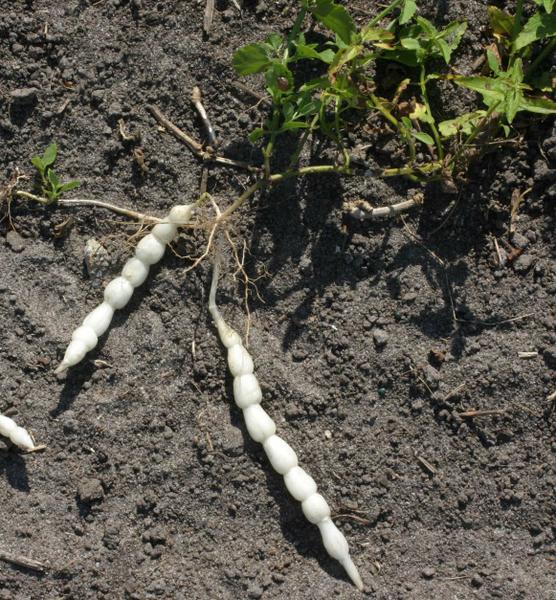Introduction
| Trade Name: Casoron | Common Name: dichlobenil | Formulation: 4G |
Uses
Winter-applied preemergence control of annual and perennial broadleaf and grassy weeds in established field-grown woody ornamentals, nut and fruit trees, and noncropland areas. Provides postemergence control of certain cool-season perennials.
| Amount of Active Ingredient | Amount of Formulation Herbicide | ||
| 4G | |||
| Per Acre | 4 to 6 lb | 100 to 150 lb | |
| Per 1,000 sq. ft. | 2.3 to 3.4 lb | ||
Major Weeds Controlled
Postemergence control of most winter annual weeds and preemergence control of most spring-germinating annual weeds. Control of several perennial weeds including dandelion, field horsetail (Equisetum), Florida betony, red sorrel, fescue, orchardgrass. Temporary suppression of other perennials including yellow nutsedge, mugwort, quackgrass, and bindweed.
Major Weeds Not Controlled
Hemp dogbane, brambles and vetch are not controlled. Weeds germinating in mid- to late summer will not be controlled, in particular, late-germinating annual grasses.
For Best Results
Apply in late autumn before soil freezes. Winter applications are possible where the soil is not frozen. Irrigation or precipitation is necessary after treatment. Soil temperatures must be 55°F or less or rapid losses will occur. In landscape plantings, winter applications may be covered by a light mulch layer to improve weed control.
Cautions and Precautions
Do not use on sandy soils. For perennial weed control, do not make surface application to areas cultivated during the fall or summer before application. Do not use for six months after planting rooted cuttings. Do not use in seedbeds, transplant or cutting beds, or greenhouses. Do not allow granules to lodge in foliage (especially conifer species) or to accumulate and contact trunk at or below the soil line. See the label for specific precautions for varieties / species of azalea, holly, and pine. Do not use on firs, hemlocks, and spruce. In research, potentilla, viburnum, and lilac were injured when dichlobenil was applied before one full season of growth. See label for additional precautions.
Residual Activity
At the rates labeled for use in nursery stock, residual control will last into early summer. Mulch atop the herbicide will extend the length of residual control. Cultivation in late spring will reduce the residual control. Higher rates will provide longer residuals, but crops may be injured.
Volatility and Leaching Potential
Highly volatile. Do not use in enclosed. In fine-textured soils, the leaching potential is low. In coarse-textured soils, leaching potential is moderate. Dichlobenil can move down a slope. Whether this occurs by mass action movement of granules or leaching of the active ingredient is unclear.
Symptoms and Mode of Action
Acts primarily on growing points and root tips. Upward translocation is rapid. Cellulose biosynthesis inhibition stops or reduces growth of meristems (growing points). Crop injury symptoms include delayed bud break, general reduction in vigor, and marginal chlorosis and "scorching" of the leaves. Mode of Action Group 20.
Additional Information
| Worker Protection Standards | REI: 12 hours | |
| PPE: coveralls, chemical resistant gloves, shoes plus socks | ||
| Manufacturer: Chemtura | EPA Reg. # 400-168 |
Publication date: Nov. 19, 2014
Reviewed/Revised: Oct. 16, 2024
N.C. Cooperative Extension prohibits discrimination and harassment regardless of age, color, disability, family and marital status, gender identity, national origin, political beliefs, race, religion, sex (including pregnancy), sexual orientation and veteran status.

